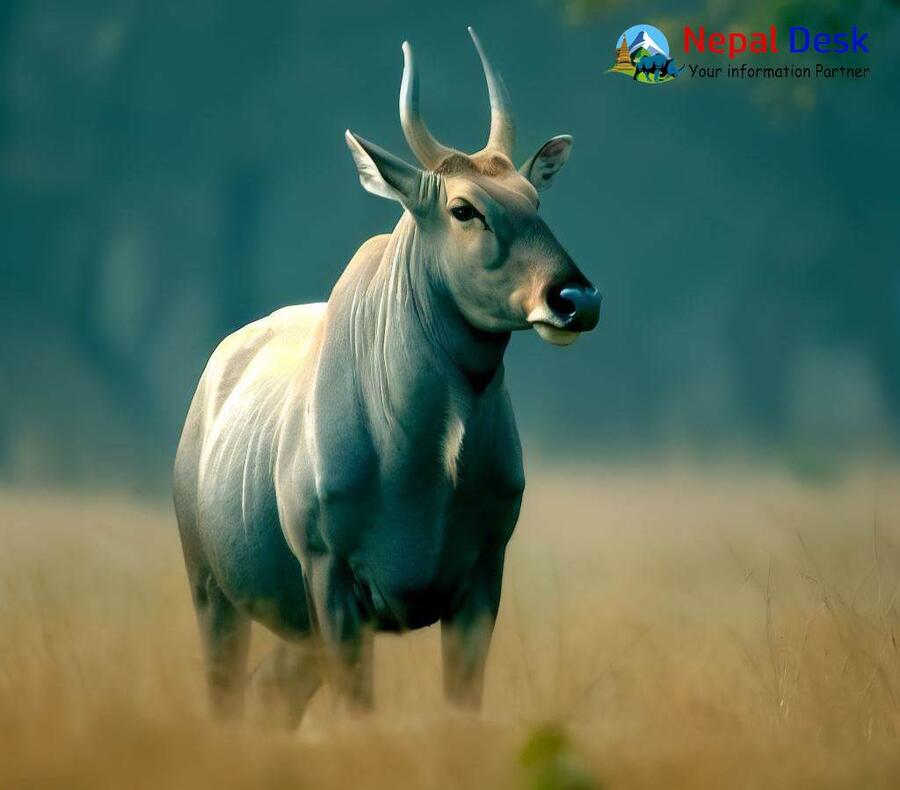
The Blue Bull, also known as the Nilgai (Boselaphus tragocamelus), is the largest antelope found in Nepal. The males are generally larger than females and can weigh up to 300 kg, while females can weigh up to 200 kg. The Blue bull is characterized by its grey-blue coat and white throat, which is more prominent in males. Females have small horns, while males have large, curved horns.
In Nepal, Blue bulls are found in the southern plains and Terai region of the country. They prefer open grasslands, shrublands, and woodland areas. They are diurnal and are active during the early morning and late afternoon, while they rest in the shade during the hottest part of the day.
Blue bulls are herbivores and mainly feed on grasses, but they also eat leaves, flowers, and fruits. They have a complex digestive system that allows them to extract nutrients from tough plant materials, such as stems and leaves.
Mating in Blue bulls can occur year-round, with peaks during the rainy season. Males engage in a ritualized display of dominance to establish their territory and attract females. The gestation period lasts around 8 months, and the female gives birth to a single calf.
The Blue bull belongs to the family Bovidae and is related to cattle, goats, and sheep. It is classified as a large antelope and is known for its agility and speed, being able to run up to 60 km/h.
Blue bulls, also known as Nilgai, are herbivores and mainly feed on grasses, leaves, fruits, and flowers. They are considered to be browsers, which means they feed on bushes and trees as well. In Nepal, they can be found in the Terai region, which includes the Chitwan National Park, Parsa Wildlife Reserve, and other protected areas. They prefer open grasslands, shrublands, and agricultural fields.
The breeding season for blue bulls in Nepal is from October to March. They have a gestation period of around 8 months, after which they give birth to a single calf. The calves are born with a reddish-brown coat, which eventually turns to gray-brown.
Blue bulls belong to the family Bovidae, which also includes cattle, goats, and sheep. They are the largest Asian antelopes and are distinguished by their sloping backs, high withers, and long, narrow faces. Males are larger than females and have short, thick, conical horns, while females have no horns. They have a lifespan of around 20 years.
In Nepal, blue bulls are listed as a protected species under the National Parks and Wildlife Conservation Act of 1973. They are also listed as Least Concern on the IUCN Red List, as their population is stable in their natural range. However, they are still facing threats such as habitat loss and hunting in some areas. The conservation efforts in protected areas of Nepal have helped in the recovery of blue bulls population in recent years.
